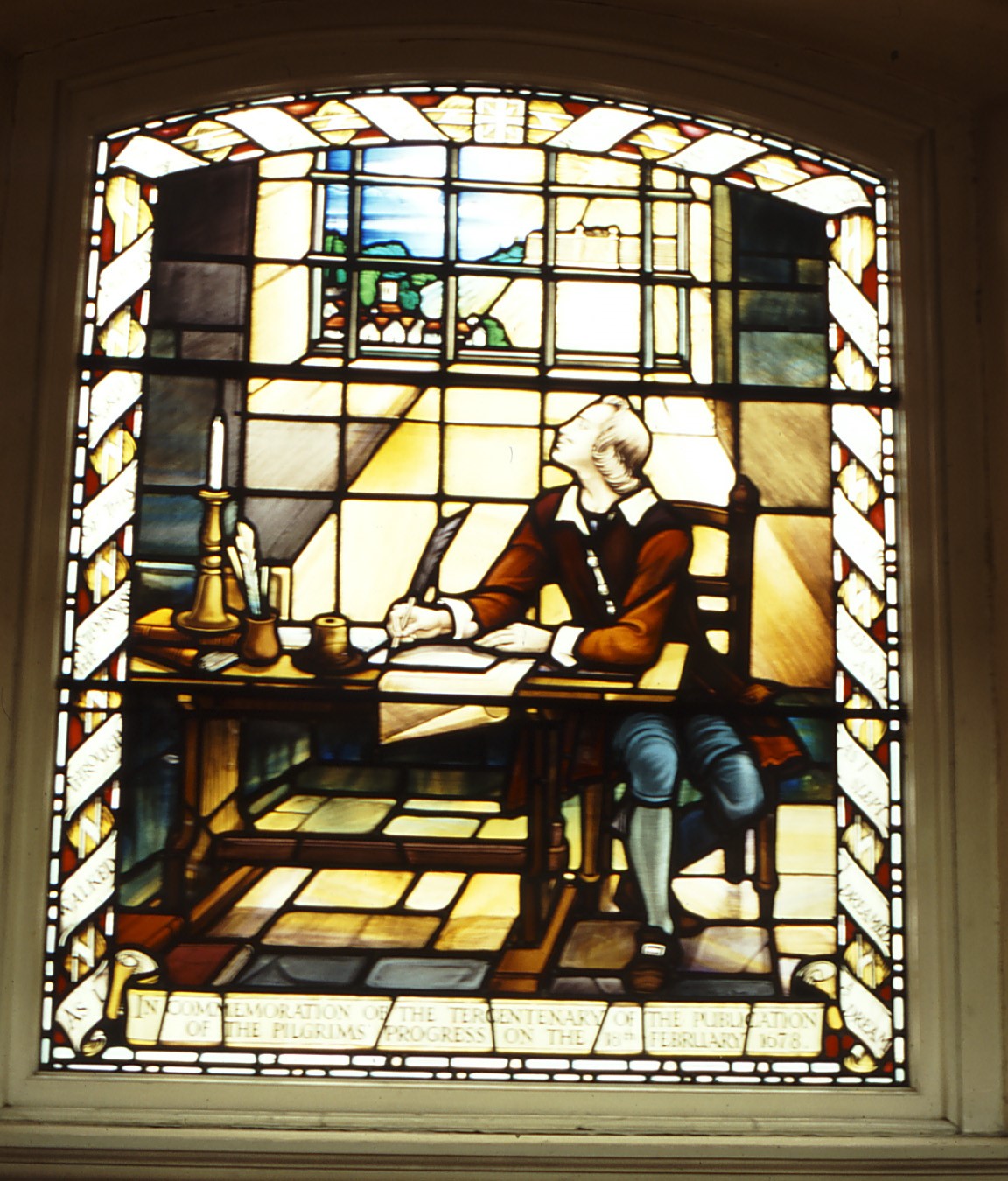This walking guide on the Leighton Buzzard Ramblers’ website pays homage to John Bunyan, the legendary Puritan Evangelist and world-famous author of “The Pilgrim’s Progress”.
It identifies many of the locations associated with him; and for the first time gives a full description of the 81 mile John Bunyan Trail, broken into ten segments to enable ramblers to enjoy particular sections of it.
As part of the 75th Anniversary of the mass trespass on Kinder Scout, the highest point in the Peak District - a vital step in providing continuing access to the countryside - the Ramblers devised the John Bunyan Trail; and Gordon Edwards, a local member of the Bedfordshire area of the Ramblers finalised the route in 2010. Today a bench dedicated to Gordon Edwards at Sharpenhoe Clappers commemorates his achievement with the simple epitaph “He Loved These Hills”.
The Trail is essentially a walk through Bunyan’s Bedfordshire. Only about half-a-mile of the route near Hexton and the section of 2-3 miles near Lilley lie in Hertfordshire.
The trail starts at John Bunyan’s Statue in Bedford It has beautiful views in many places and the sites visited en route have much historic interest, such as “Bunyan’s Oak” near Harlington (below). Bunyan’s fame enabled him, with a couple of day’s notice, to attract a congregation of a thousand in the middle of a field (he was not allowed to preach at an established church).

John Bunyan (1620-1688) is well known for writing what has been widely recognised as “the ultimate classic in the English language”. “The Pilgrim’s Progress” is a morality tale that has been translated into over 200 languages and dialects. It has been continually in print since 1678, an amazing 1,300 editions having been produced.
It has influenced authors as diverse as William Thackeray, Charlotte Bronte, Mark Twain, CS Lewis, John Steinbeck and apparently even Enid Blyton.

When Terry Waite CBE was imprisoned in the Lebanon from 1987 to 1991, he received a postcard from Mrs Joy Brodier, a young mother from Brickhill in Bedfordshire, illustrating one of the stained glass windows at Bunyan Meeting Church, one element of which showed Bunyan in Bedford Goal (image above). This image, said Waite, gave him much hope and inspiration. Its creations such as the miry Slough of Despond, the Delectable Mountains, the Valley of the Shadow of Death, House Beautiful, Mr Facing-Both-Ways, Lord Hategood of Vanity Fair, Giant Despair and Filthy Lucre have become icons of English literature.

As Bunyan himself prophesised with regard to “The Pilgrim’s Progress”, Bedfordshire Ramblers hope that “this book will make a traveller of thee”.
